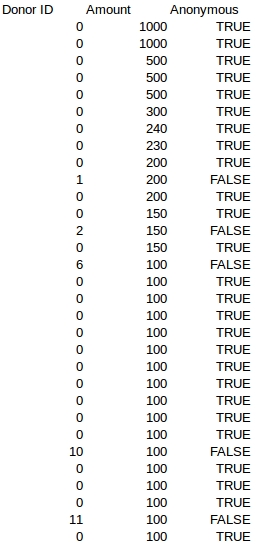The TERF group Fair Play For Women (FPFW) has seen considerable press attention after placing an ad in the Metro claiming that reform of the Gender Recognition Act (GRA) would place (cis) women and girls in danger. This nonsense claim has been debunked at length many times in the past and will not be the subject of this post. Instead, I will be discussing claims about the funding of TERF groups, using data scraped from a FPFW crowdfund page as a case study.
Trans inclusive feminists such as Casey Explosion and Zoe Stavri have raised some interesting questions in relation to this, pointing out the considerable cost of placing a full colour, whole page ad in the Metro (around £45,000) and questioning where the funding for this relatively opaque group comes from.
Edit: Shortly after publishing this, a commenter on Twitter pointed out that the quoted cost for the ad may be incorrect, as the ad may have been published as a “classified” rather than “display” ad, at a presumed cost of £17,300 including VAT. Still no small chunk of change.
Allegations and suspicions that TERF groups are at least in part funded by conservative interests are common, driven in part by documented instances of TERF groups being funded by conservative evangelicals in the US, right wing evangelicals talking openly about using TERF talking points to undermine the LGBTQ community in general, prominent TERFS signal boosting anti-LGBTQ organisations and the willingness of conservative news sites like Breitbart to defend TERF fundraising efforts amongst many other instances of close relationships between right wing anti-LGBTQ groups and individuals and TERF organisations and individuals. It is, however, difficult to prove with any certainty direct collaboration in most cases, TERF groups are typically small organisations that are not required to keep public accounts and often refuse to disclose their funding sources.
In response to a TERF scoffing at the notion that FPFW’s funding came from anywhere but money raised by “ordinary people” who “donated a few quid to protect women’s rights”, Zoe Stavri produced a Twitter thread suggesting that the success of FPFW’s recent fundraising efforts was suspicious. In order to investigate this further, I decided to scrape FPFW’s most recent and still active crowdfunding page to investigate further. An anonymised version of the resulting raw data (given in reverse chronological order) can be found here.
The resulting data is interesting, to give a brief summary, a considerable proportion (around a third) of the money contributed to the crowdfund came from anonymous donations of £100 or more and that of the money contributed by named individuals around a fifth came from individuals who had donated £100 or more. While we cannot, by definition, state with any certainty where the anonymous contributions came from, it is interesting that such a large chunk of the money comes not from “ordinary people” chucking in “a few quid” but large donations (some in the region of £500-£1000) of unknown provenance.
The boring maths-y bit
The mean donation to the fundraiser was £31.88 (95% CI -128.16-204.55), the mean donation for anonymous and named donors was £38.19 (95% CI -128.16-204.55) and £23.47 (95% CI -15.70-62.64), respectively Summary statistics for the donations are given in the table below:

This might initially suggest no statistically significant difference between anonymous and named donations, however, when, out of interest, I sorted the donation data by amount, something interesting happened. Nearly all of the largest donations were anonymous!

If we define a “large” donation as one of £100 or more (considerably more money than most ordinary people would feel able to chuck at a crowdfund in one go), there are 37 such donations in the data, 32 of which are anonymous. These large anonymous donations total £6,970, a little over 30% of the total money raised.
Of particular interest are the five donations of £500 or more (two of £1,000 and three of £500). All of these donations were anonymous. In one instance a donation of £500 was immediately followed by a donation of £1000 two minutes later, possibly indicating a single anonymous donor contributing £1,500. A very “ordinary” thing to do indeed.
There were 275 named donors. Of named donations, larger donors (£100 or more total donations) contributed £1,430 (19% of total named contributions). One off donations of £50 or more totalled £13,190 (57% of total raised). It appears to be the case that a considerable proportion of the funding for this crowdfund comes from relatively large single donations, often extremely large amounts from anonymous donors.
While, again, we cannot know with any certainty the exact source of money going into this crowdfund, it is reasonable to assume that the large donations that comprise a considerable chunk of FPFW’s income come from wealthy individuals or groups, many of which for some reason prefer to remain anonymous to the public.
Reblogged this on Wessex Solidarity.
LikeLike